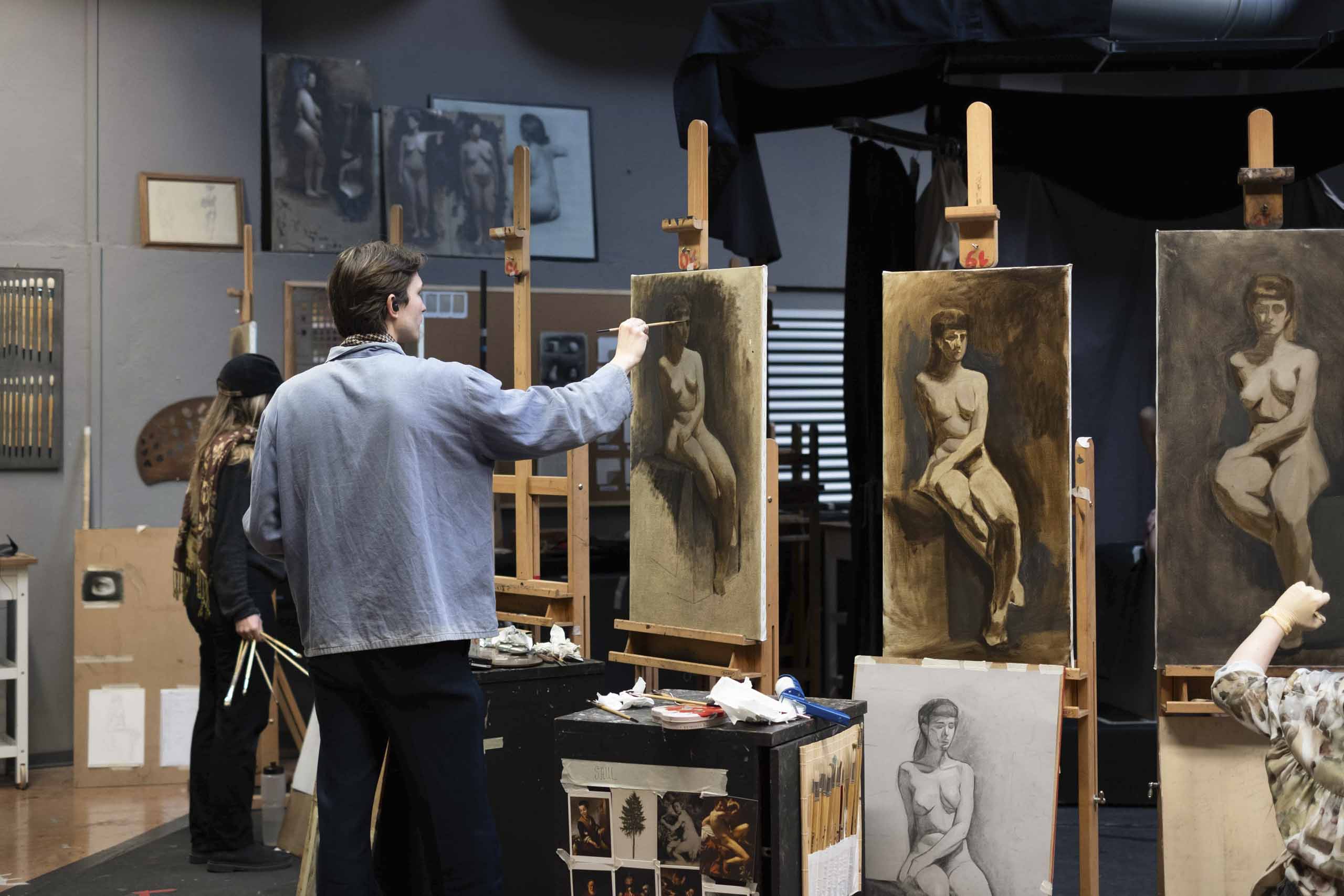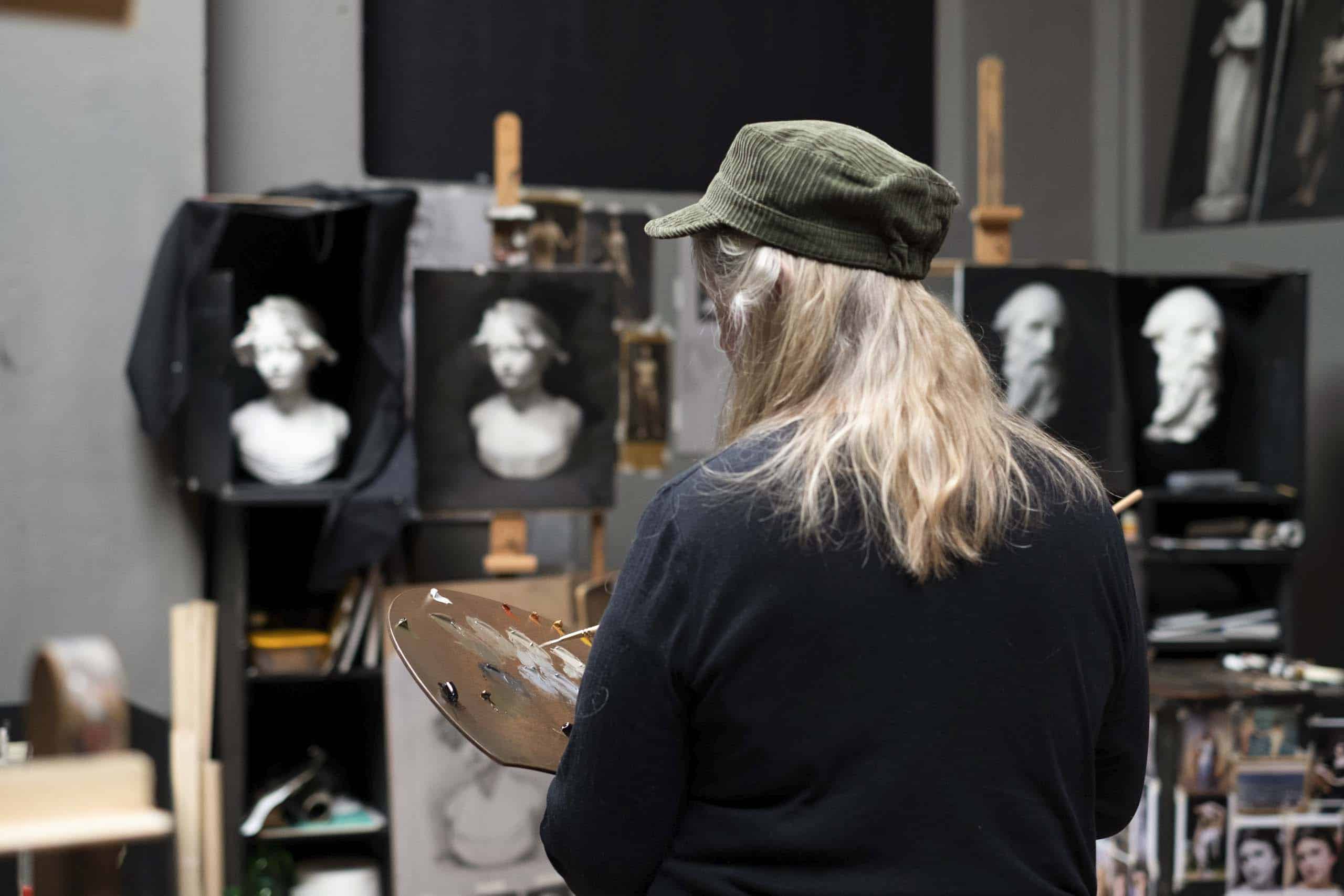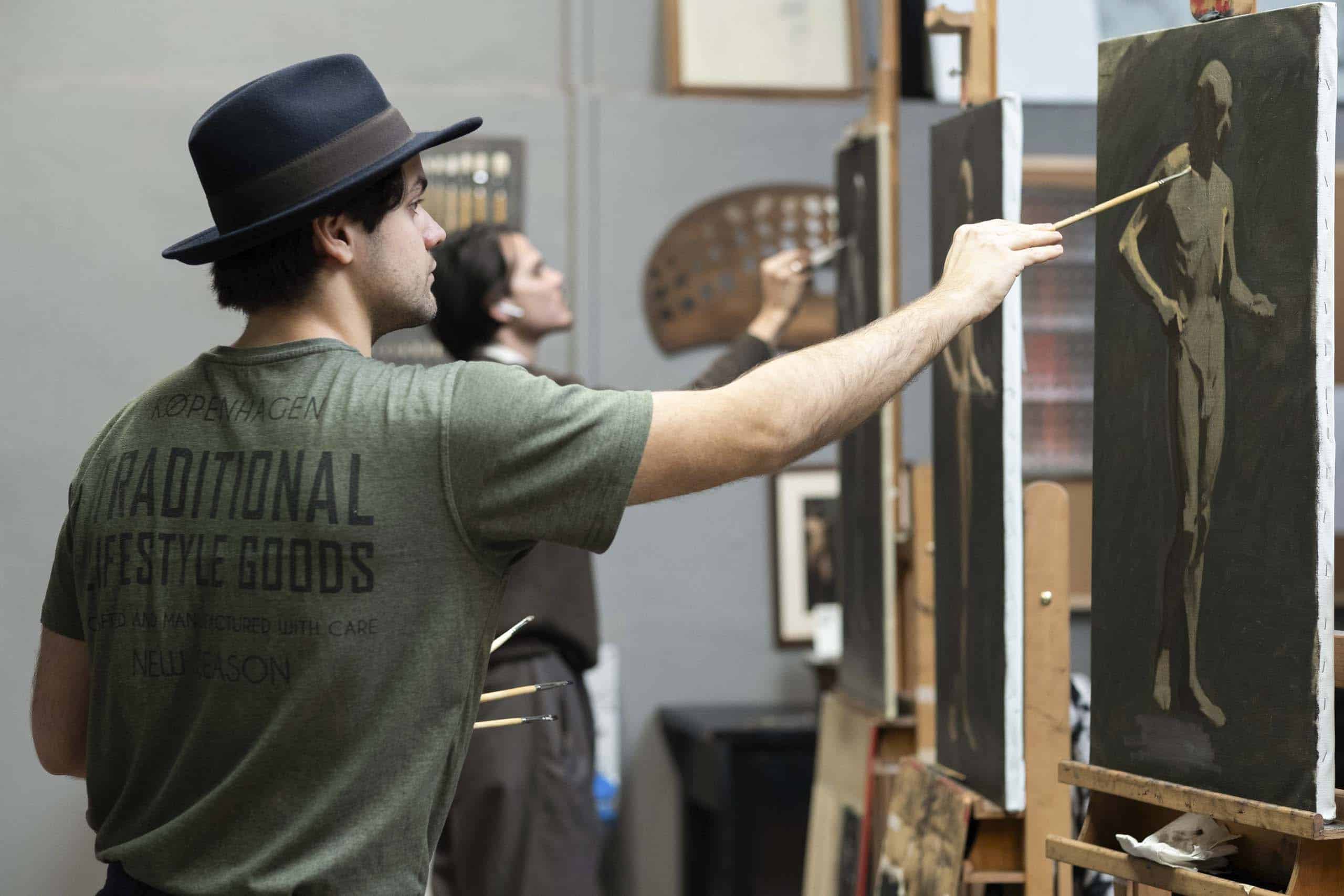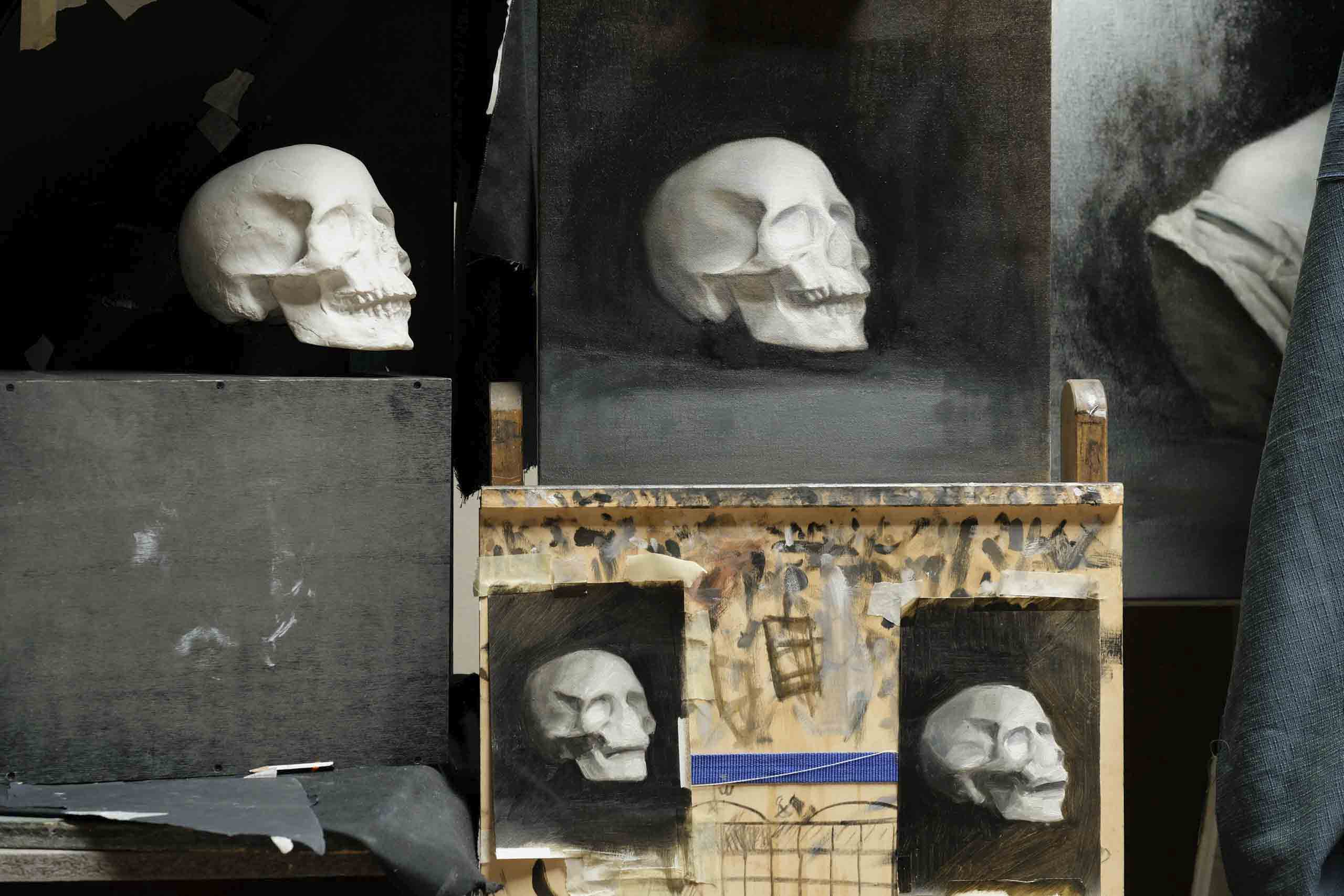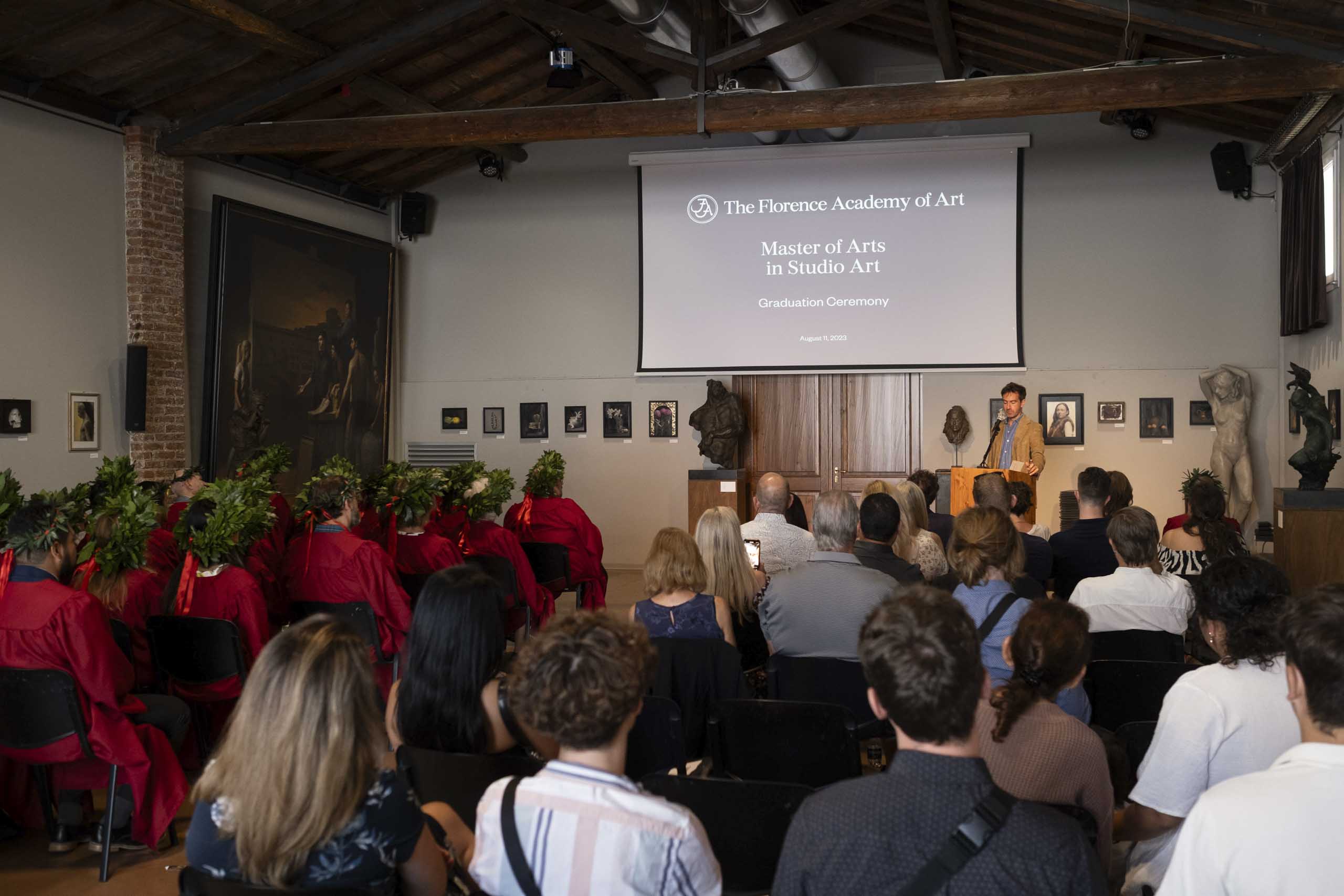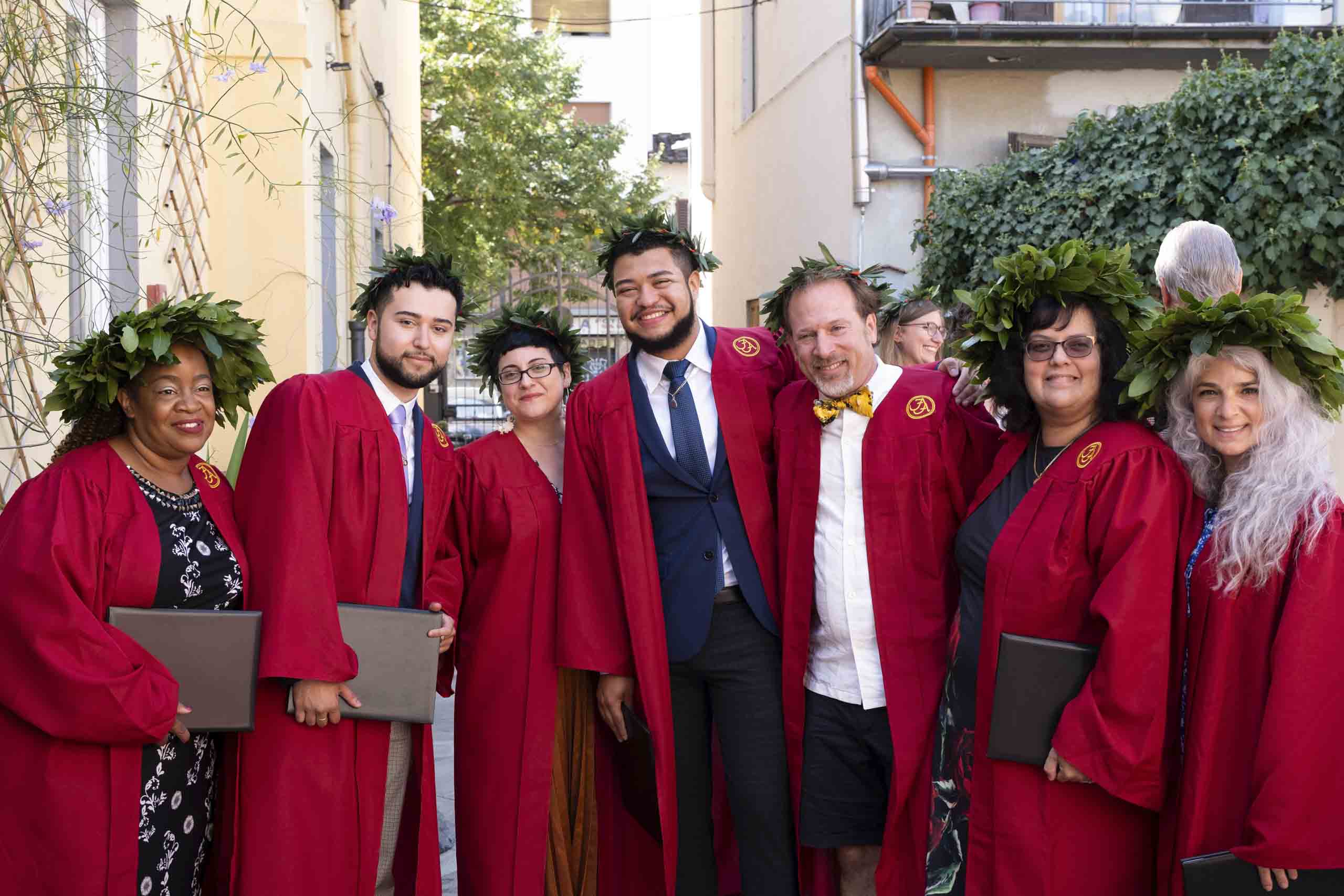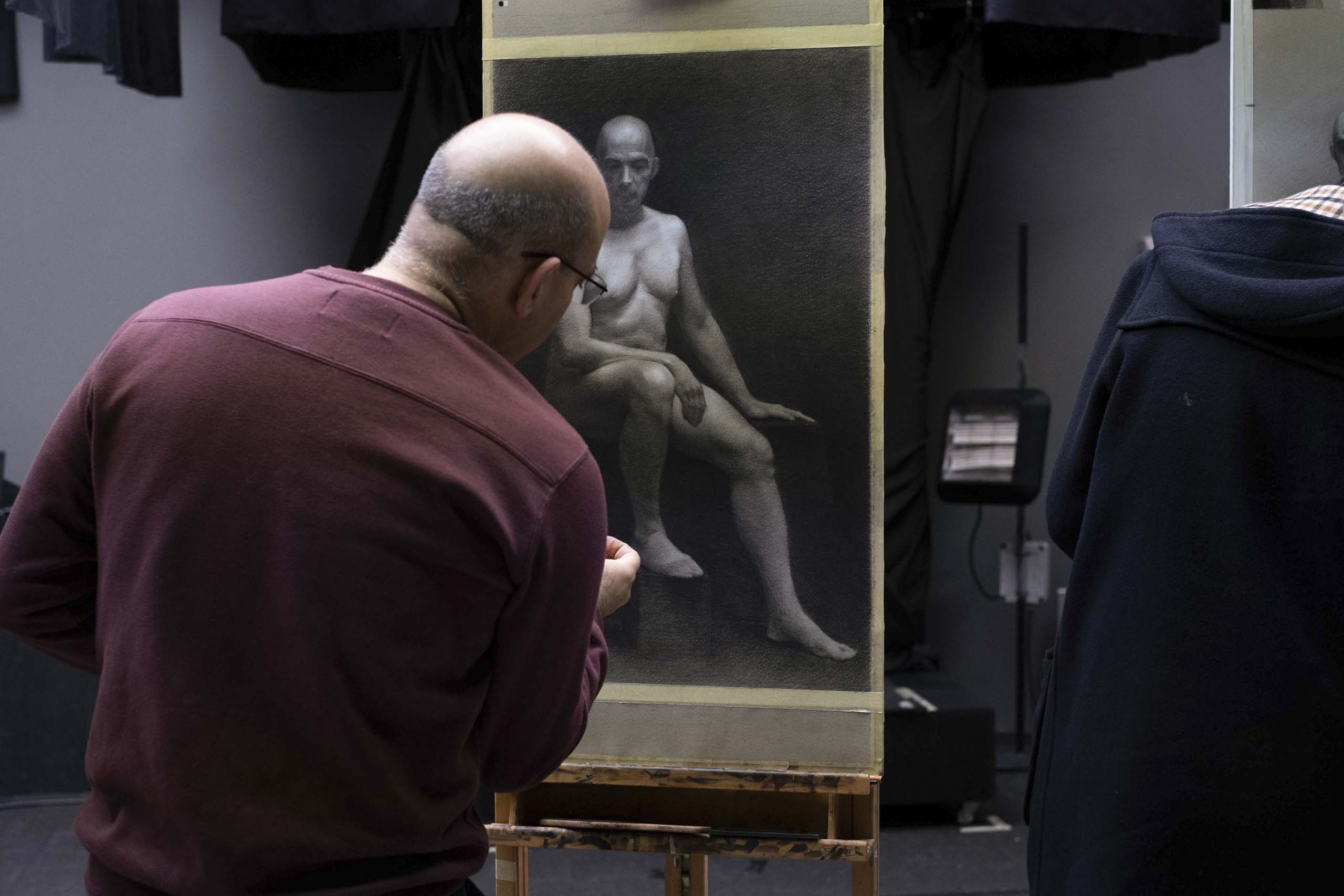The Florence Academy’s Master of Arts in Studio Art, with its focus on traditional methods, provides training in drawing and painting to art educators seeking to use these skill-based techniques in their classrooms. The program is designed to provide the knowledge and develop the skill set of MA participants from a variety of backgrounds and levels of experience.
Participants in the program begin with an introduction to methods used in traditional atelier training; checking proportions, values, shapes, edges, value scales, etc., as well as incorporating contemporary approaches to paint handling and materials. Great emphasis is placed on working from life, and learning how to translate directly from nature.
Initial projects help to build skill and confidence and progress to make use of more sophisticated techniques and methods. The program ultimately provides participants with invaluable and transferable skills that can be taught and demonstrated to their own students in class, as well as applied to their own artistic work.
The MA program is a reduced-residency MA accredited by the National Association of Schools of Art and Design (NASAD), and consists of 30 credits of full-time study, entirely studio-based and structured in three 5-week sessions, conducted over three summers, with some remote courses held during the year. In total, the courses are equal to a 30-unit degree program. Each summer session is composed of two courses, 4 credits each, that meet Monday through Friday (five days) including two Saturdays, 9:00 am – 4:00 pm. Between the summer sessions, beginning after the first summer, there are remote Independent Study courses which account for 6 credits in total (3 per year). These are held monthly, and can be done asynchronously or synchronously. If applicable, participants should check with their school districts to make sure the FAA MA is recognized for pay scale advancement. For our listing on the NASAD website, please click here.
MA participants may choose to attend year one and/or year two in person or remotely. The 3rd year session is held in person in Italy. Students studying in person will spend two summers studying at facilities at St. Peter’s University, Jersey City, NJ, and their third and final summer in Florence, Italy, at The Florence Academy of Art campus. The city of Florence’s connection with the Renaissance, through the many monuments and museums located in its historic center, will greatly aid the participants’ artistic training, as well as enrich their ability to inspire their own students.
FAA’s Master of Arts in Studio Art will be of interest to:
- visual arts educators of elementary, middle, and high school classrooms
- university students preparing to become art educators
Maximum enrollment: 30 students per cohort.
Click here to view the MA Graduation Ceremony.
Additional Information
By learning a traditional methodology, we provide participants with a blueprint for incorporating skill-based methods into the classroom. They will learn to demystify the training of an artist, and break down the vastly complex task of learning to draw and paint from life into gradual steps. Participants will learn the techniques to teach their students how to observe and translate accurately from nature. Ultimately, students will be able to take these skills with them into their own personal work, as they see fit.
The course teaches basic skills and techniques in order to gain visual literacy and hand-eye coordination. Select exercises come directly from the Florence Academy’s accredited curriculum for Drawing and Painting, and provide the basis for constructing a thorough foundation in time-tested, skill-based techniques. Such knowledge will have the dual benefit of increasing participants’ confidence in teaching these techniques in their own classrooms, as well as supporting their own creative development as artists. Simply put, the program aims to empower the participants as both educators and artists.
MA Faculty will prepare students for teaching by providing an in-depth and hands-on experience of The Florence Academy of Art’s pedagogy. This emphasis on techniques, method, and language of instruction begins at the start of the course and continues throughout the three sessions. Participants will regularly receive direct feedback from MA Faculty, with one-on-one critiques that are tailored to individual needs.
Locations
In-person instruction takes place at our host campus, St. Peter’s University in Jersey City, NJ, just outside of NYC, and The Florence Academy of Art campus in Florence, Italy, for students enrolled in Year 3 of the MA Program.
Saint Peter’s University
2641 John Kennedy Blvd.
Jersey City, NJ 07306
The Florence Academy of Art
Via Aretina 293
50136 Florence, Italy
Residency Requirement for Year 3 Students:
The third and final summer of instruction takes place in Florence, Italy, at The Florence Academy of Art home campus. MA participants will be considered in-person at the Florence, Italy, campus location during their third and final term of study. Limited exceptions will be made for extenuating circumstances that prevent the participant from attending classes abroad. Requests to alter the learning location for Year 3 must be submitted in writing to the Academic Director no later than November 1 following completion of Year 2 studies. Exemptions will be made on a case-by-case basis to allow participants to complete their Year 3 either remotely, or partially or fully in-person on the Jersey City campus.
MA Curriculum
The MA in Studio Art curriculum will be focused on overall development of the artist’s skill, along with emphasis on the participant’s understanding of the methodology. Coursework in the studio is tailored to concentrate on formal issues (such as convincing proportions, composition, color theory, and paint handling), technical issues (such as preparation of materials and historical time-tested techniques), and conceptual issues (such as history of the method and process, and their application to artistic outcomes). Students will apply these issues to a variety of genres: figure, still life, and portrait.
During the course, participants are tested on their understanding of the methodology used to teach the issues outlined above. This is achieved through written assignments, devising lesson plans, and sessions during class in which participants share feedback on each other’s work. Because of this, fluency in the English language is a requirement to join the program.
During the summer sessions, all required assignments will be accomplished during daytime class hours (9am to 4pm), and attendance is mandatory during the full period. Students may miss the equivalent of two days of attendance with no grade penalty. After the third absence, the grade will be lowered one-half grade per absence. Work to be done during the year between summer sessions is due on a monthly basis, as communicated by faculty.
Remote Instruction
During the summer sessions, remote instruction is synchronous, and all students attend class live from 9am to 4pm EST each day of the program by logging on to Zoom. Critiques and demonstrations are given throughout the day. Students are expected to upload their works-in-progress every morning and afternoon to a dedicated online portal. Works are critiqued both privately by the instructors meeting with individual students, and in group sessions with the online cohort. Students will have access to dedicated staff for technical issues.
During the Independent Study sessions between summers, participants have the option to follow the monthly classes either synchronously or asynchronously. It is our goal to accommodate the schedule of our participants as much as possible, and we know educators are busy during the year.
Students who study remotely must possess a computer with a webcam. They will be given instruction on how to set up suitable studio spaces at home for traditional training.
















